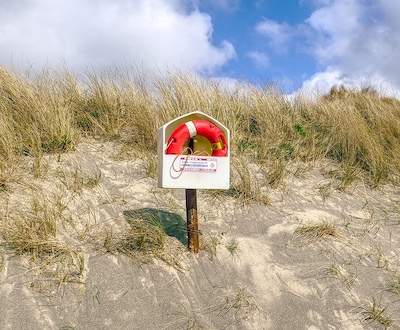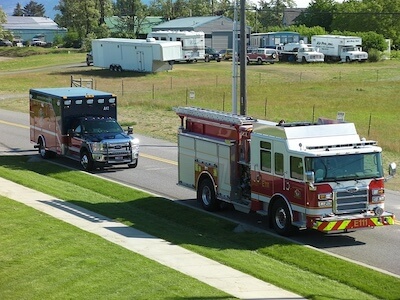Coaching to Help Directors and Boards Examine Safety Practices
- Home
- Small Nonprofit Practices
- Coaching to Help Directors and Boards Examine Safety Practices
Coaching to Help Directors and Boards Examine Safety Practices will allow you to review how your organization thinks about and takes action on safety issues.
Keeping participants, staff and the public free from harm, within the reality of what the nonprofit is engaged in, is of paramount importance.
Across the spectrum of various nonprofits there are varying degrees of risk. Sports organizations will experience more risk than an educational classroom type situation.
Adjust the wording of the practice to be reflective of your organization. Create a baseline, and seek to improve year over year, or quarter over quarter, whatever best works for your small nonprofit.
73. Buildings, equipment and locations are safe

This is Practice 73 of 80
It only stands to reason you never want anyone seriously injured. Everything you can do to ensure safety of participants and staff has been done. There is no lingering doubt about safety.
The Board has dictated that it be given priority, meaning you pay attention to it first before doing other things. All safety equipment is checked and maintained daily or according to a strict hierarchy of inspections.
- What is the organization's overall attitude toward safety in facilities and around the property?
- What is the attitude toward equipment safety?
- Who has the authority when it comes to safety of facilities, property, and equipment?
- What needs attention?
Why This Practice is Important to Me as a Leadership Coach
Facilities and grounds are safe. You know because you have checked it and recorded it.
Personally I am irked when organizations don't take care of their property and facilities.
As a professional Coach, it's an issue of organizations, and therefore their leadership, being aware of risk, and having an attitude that puts people's welfare first.
A few leaders don't care. Others don't see. Others don't know what to do. But thankfully most put in the work to ensure safe buildings, equipment and grounds.
The Key Concept, Attitude or Action That Drives This Practice
SAFETY
An Expansive Thought
Is there a system in place that assures this? Imagine having a reputation for excitement AND safety.
An Action Point
This is high priority. Make a quick, top of mind list of areas, systems, equipment or whatever that you know to be unsafe or getting risky. Start today to replace or repair every item on that list as quickly as possible.
74. A current emergency response plan is in place

This is Practice 74 of 80
Know who in your staff will respond poorly to a crisis. Some people freeze in an emergency. They don’t mean to, but they do. Minutes may count in an emergency and confused people will only slow the response.
- What is our team-response plan to handle emergencies?
- Where can people get their hands on it, or download it?
- How can we accurately access the individual and group strengths and weaknesses of our emergency-response team?
- How can we best execute on the plan if our team keeps changing on a regular basis?
Why This Practice Is Important
It’s important to the overall safety of others to have these people identified so that they are not put in positions they cannot handle.
The Key Concept, Attitude or Action That Drives This Practice
COORDINATION
An Expansive Thought
Individual preparedness is critical, but a team response and coordination is also vital. Although more difficult to plan out, even with rotating staff, this type of planning can make the difference.
An Action Point
Choose a group of knowledgeable people who can begin to work on an emergency plan to handle all sorts of emergencies. If you don’t know where to begin, then start with fire, missing person and medical. There's lots of help online.
75. Staff are regularly trained to carry out the
emergency response plan

This is Practice 75 of 80
Staff know. You have reviewed, practiced and kept awareness levels high with all on-site teams. You have developed an emergency response for all the scenarios you can think of.
- What printed materials do we have for quick easy access?
- What signage do we need? Where?
- What training procedures are in place right now?
- How often do we practice?
- Have we practiced several different scenarios including as many people as possible?
Why This Practice Is Important to Me as a Leadership Coach
Board members and other parties who might be contacted in a major emergency know how to respond. I have helped them think through where they can access help with this.
Preparedness is a state of mind as much as a readiness to action. In coaching my clients, I work on having a readiness mindset.
The Key Concept, Attitude or Action That Drives This Practice
PREPAREDNESS
An Expansive Thought
What if safety training became a vital element of your program, rather than an add-on that takes you away from what you want to be doing? Imagine staff looking forward to it.
An Action Point
Can we say, “We are prepared?” Make this year the best year ever for a well-prepared team.
76. Participants review what to do in emergency
situations

This is Practice 76 of 80
You can’t spend all your time practicing for emergencies, but what can you do?
- How do we handle conveying instructions like this to people who just arrive for a good time?
- What is a reasonable amount of time to spend on safety instructions?
- If anything, what are we letting take precedence over safety?
- What clear and ample signage in place?
Good signage is in place wherever it is needed. Directions are few, short and clear. Those few clear points, well publicized, can be remembered for years.
Why This Practice Is Important
The reputation of the organization could be tainted for a long time if things go badly. You take the time to practice basic emergency response.
The Key Concept, Attitude or Action That Drives This Practice
CONVEYING
An Expansive Thought
Problems arise because people have not spent any time reviewing safety procedures. Anything less is an excuse that could cause unnecessary or serious injury, or even loss of life.
Imagine participants looking forward to getting to your facility, even for the safety training.
An Action Point
Be creative. Make it memorable. Make it consistent.
This is the end of Coaching to Help Directors and Boards Examine Safety Practices.
To review the next four safety practices, go to Organizational Coaching to Improve Safety at the Smaller Nonprofit.
What Changes are You Implementing as a Result of Working Through Coaching to Help Directors and Boards Examine Safety Practices?
Coaching to Help Directors and Boards Examine Safety Practices gives four distinct practices to check your organization against.
What have you noticed? What have you changed? What can you be thankful for?
Contact me here Privacy Policy
© G.E.Wood and Associates. All Rights Reserved in all media.
G.E. Wood and Associates is an international coaching firm registered in Ontario, Canada
142 Pratt Crescent, Gravenhurst, Ontario, Canada, P1P 1P5